Safe Handling of Nanomaterials – Health risks associated with nanotechnology and how to manage them.
South Africa, with its rich mineral resources and growing scientific community, is well-positioned to become a major player in the field of nanotechnology. However, the safe handling of nanomaterials is crucial to protect both workers and the environment. This blog post will delve into the key aspects of nanomaterial safety and provide practical guidelines for businesses operating in South Africa.
Do you have any questions? Kindly leave your details for one of our Expert Consultants to give you a no-obligation call.
Understanding Nanomaterials
Nanomaterials: A Detailed Definition
Nanomaterials are materials with at least one dimension in the nanometre scale, which is typically defined as 1-100 nanometres. This is incredibly small: a nanometre is one-billionth of a metre.
Key Characteristics of Nanomaterials:
Size: Their unique properties often arise from their small size, which can lead to increased surface area, quantum effects, and altered physical and chemical properties.
Composition: Nanomaterials can be made from various materials, including metals, ceramics, polymers, and biological materials.
Structure: They can have different structures, such as nanoparticles, nanowires, nanotubes, and nanosheets.
Examples of Nanomaterials:
- Carbon nanotubes: Cylindrical structures made of carbon atoms.
- Graphene: A single layer of carbon atoms arranged in a hexagonal lattice.
- Quantum dots: Semiconductor nanoparticles that emit light when excited.
- Dendrimers: Highly branched, three-dimensional macromolecules.
- Nanoparticles: Tiny particles with dimensions in the nanometre range.
Applications of Nanomaterials:
- Electronics: Transistors, solar cells, and flexible displays.
- Medicine: Drug delivery, tissue engineering, and medical imaging.
- Materials science: Composites, coatings, and catalysts.
- Energy: Batteries, fuel cells, and energy storage devices.
- Environmental science: Water purification, pollution remediation, and sensors.
In essence, nanomaterials are materials that exhibit unique properties due to their small size and can be used in a wide range of applications. Their unique properties, such as increased surface area and quantum effects, make them valuable in various applications, including electronics, medicine, and energy. However, their small size can also pose potential health and environmental risks.
Key Health and Safety Concerns
- Inhalation: Nanomaterials can be inhaled and reach deep into the lungs, potentially causing respiratory issues.
- Skin absorption: Nanomaterials can penetrate the skin and enter the bloodstream.
- Ingestion: Accidental ingestion can lead to gastrointestinal problems.
- Environmental impact: Nanomaterials released into the environment can harm ecosystems and contaminate water sources.
Safe Handling Practices
Risk Assessment:
- Identify the specific nanomaterials being used and their associated hazards
- Assess the potential exposure routes for workers.
- Develop a risk assessment plan to mitigate risks.
Engineering Controls:
- Ventilation: Ensure adequate ventilation to reduce airborne particle concentrations.
- Enclosures: Use glove boxes or other containment devices to isolate nanomaterials.
- Local exhaust ventilation: Install hoods or other systems to capture and remove airborne particles.
Administrative Controls:
Training: Provide comprehensive training to workers on the safe handling, storage, and disposal of nanomaterials.
Safe operating procedures (SOPs): Develop clear SOPs for all nanomaterial-related activities.
Emergency response plan: Have an Emergency response plan in place to respond to spills, accidents, or other emergencies.
Personal Protective Equipment (PPE):
Respiratory protection: Use appropriate respirators to protect against inhalation of airborne particles.
Skin protection: Wear gloves, laboratory coats, and other protective clothing to prevent skin contact.
Eye protection: Use safety glasses or goggles to protect against eye exposure.
Waste Management:
Proper disposal: Dispose of nanomaterials and contaminated waste according to local regulations and guidelines.
Labeling: Clearly label containers containing nanomaterials to prevent accidental exposure.
Regulatory Framework in South Africa governing the handling and use of hazardous substances
South Africa has specific regulations governing the handling and use of hazardous substances, including nanomaterials. Businesses operating with nanomaterials must comply with these regulations, which may include:
Occupational Health and Safety Act 83 of 1993: This act sets out the basic health and safety requirements for workplaces in South Africa.
Hazardous Substances Act 15 of 2007: The Hazardous Substances Act 15 of 2007 is a comprehensive piece of legislation in South Africa that regulates the manufacture, import, export, storage, transport, and use of hazardous substances.
The safe handling of nanomaterials is essential for protecting human health and the environment. By following the guidelines outlined in this blog post and complying with relevant regulations, businesses in South Africa can ensure that their operations are conducted responsibly. As nanotechnology continues to advance, it is crucial to prioritise safety and sustainability to realise the full potential of this emerging field.
Recognising the importance of safety in every aspect of the organisation is crucial. Safety is not just a compliance issue; it is a core value that impacts everyone. Reflecting on the processes in place is equally important. Are Safety Audits, Compliance Audits, and Risk Assessments being conducted effectively? Are they aligned with the SafetyWallet Triple P System? Taking action to improve safety practices is essential. Engaging with SafetyWallet’s rewards programmes can help recognise and incentivise safe behaviours, fostering a culture of continuous improvement.
Join us at SafetyWallet and take the first step towards cultivating your own Garden of Safety. Subscribe today to access our comprehensive resources and support, and let’s work together to create a workplace where safety is everyone's responsibility.
Have questions? Engage with us through the chat box on your screen—we're here to guide you toward a safer, more compliant future.
To find out what other Additional Services we offer, please click on the picture below:
SAFETYWALLET In Co-operation with MAKROSAFE and MY SAFETY SHOP
Disclaimer:
Walli can make mistakes. Consider checking important information and please speak to SafetyWallet's support team, should you be in doubt. Please also see: https://www.safetywallet.co.za/termsandconditions


Leave a comment